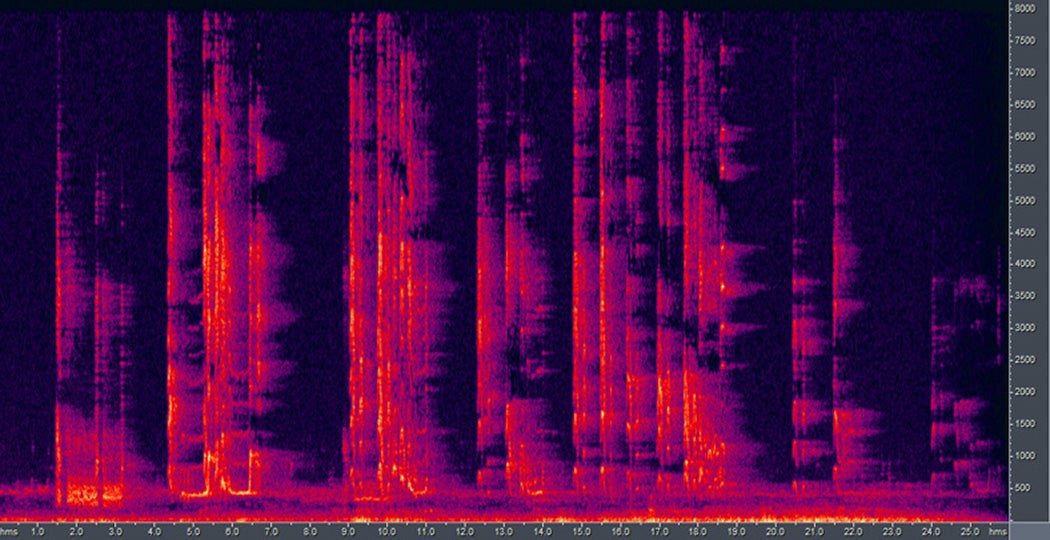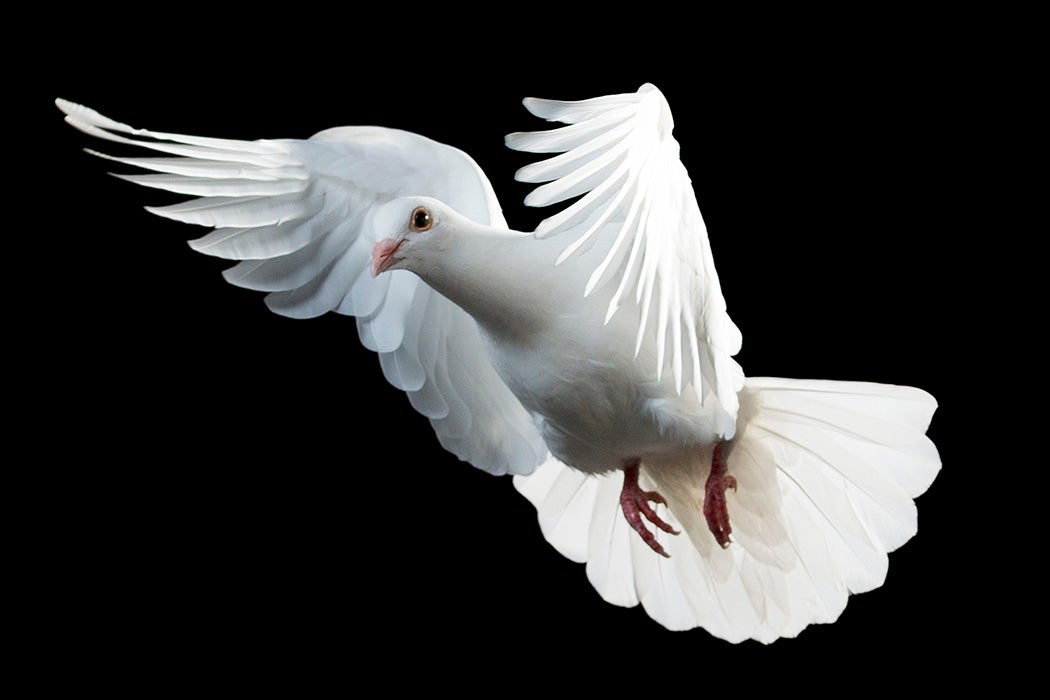Richard Hunt had a knack for novel—if questionable—scientific methods. In 1920 he wrote to the ornithology journal The Condor after estimating the maximum footspeed of a quail (12 mph) and roadrunner (10 mph) by pursuing them down California country roads in a Ford with an eye on the speedometer.
In 1923 he turned his attention to bird sound. “The common belief seems to be that bird sounds are essentially indescribable,” he wrote. And yet, in “The Phonetics of Bird-Sound” Hunt likened bird “utterances” to human speech, and proposed a transcription system based on the English alphabet that might promote a shared scientific understanding of bird sound and how to describe it.
Weekly Newsletter
While Hunt expected collaboration and discussion to improve his alphabet, it was an ambitious proposition with at least two major challenges: not simply to develop a system that works for the incredible diversity of avian life and sound across the planet, but for the many ways that people investigate those sounds scientifically.
“Describing sounds is such a funny business,” says Dominique Potvin, a behavioral ecologist specializing in bird song at the University of the Sunshine Coast in Australia.
Bird watchers have plenty of wonderful terms for bird sounds, but for scientists there are a few clear shortcomings: Bird sound words are specific to language or even dialect; they fail to capture fine variation in a single call; and perhaps most importantly, they are terribly subjective.
Bird sound experts agreed that although Hunt enthusiastically identifies an enduring scientific challenge—how to communicate about sounds—his proposal has few redeeming qualities. Modern ornithologists do not use a standardized alphabet for bird-ese.
![A male Yellowhammer [Emberiza citrinella] perched on a branch singing](https://daily.jstor.org/wp-content/uploads/2023/03/what_it_sounds_like_when_doves_cry_2_1050x700.jpg)
Hunt didn’t provide many examples of transcribed sound, but recommended that the call of the Western Wood-Pewee, which the Audubon Society describes as a “harsh nasal pee-eeer,” should be transcribed as follows:
zzzzzzzzz
Beeeeeeeeee
He also included a list of about 500 descriptors related to qualities of “pitch, intensity, rate of speed, form, expression, [and] timbre.” The list is alphabetized, rather than grouped by characteristic, and there is no further explanation. Some words are relatively straight-forward onomatopoeia, some are nicely evocative, and some are frankly incomprehensible.
Crick, creak, crack, croak. Zizzy, uncanny, pebble-tapping, lusty, pule. Ventriloquial, tantara, feminine, crepitate. Tintinnabulation, sough, devil’s tattoo. Sparrowy.
A year after Hunt’s phonetics, in a reply to The Condor, ornithologist Aretas A. Saunders insisted that Hunt’s linguistic approach couldn’t capture pitch or timing the way a musical or hand-drawn graphical representation might. But Saunders’s own system wasn’t fully developed either. “We sadly need a classification of sound qualities that will make what we can learn of this factor more definite and uniform; for quality [timbre] remains the one factor of bird song that is most difficult to describe and is least tangible,” he wrote.
Reference recordings would have made Hunt’s system less confusing, said Glenn Seeholzer, a neotropical ornithologist with the Macaulay Library at the Cornell Lab of Ornithology. He has worked extensively in rainforests and dense vegetation, where many birds must be identified most of the time by sound.
“You need to be recording these things to understand what birds are there,” said Seeholzer, “It’s important when the diversity is so high and your ability to see is so low.”
Although the first recording of a captive bird (a white-rumped shama) was made in 1889, field recording wasn’t commonplace in 1923. In 1929, ornithologists at Cornell began developing a process sometimes called bird sound photography, in which birds were first recorded on mobile motion picture camera equipment, and the audio was later transferred to phonographs for ease of use, distribution, and storage.
A century of technological advances has radically altered the landscape of bird sound recording and analysis. Microphones have improved. Audio has gone through phases of magnetic tape and then digital formats. Recorders are wireless and can store more data. High speed internet and online archives have made those recordings accessible around the world. Computers are more powerful, and analysis is more advanced. Sound visualizations, called spectrograms or sonograms, are ubiquitous in bird sound analysis.

A spectrogram displays measurable properties of sound, with time along one axis, and frequency, which relates to pitch, along another. Amplitude, or loudness, can be shown with color or brightness as a heatmap. An invention during World War II, they spread to research scientists over the next decade. Potvin may refer to bird sounds based on the appearance of their “shapes” on a spectrogram, or some arbitrary set of labels simply to stay organized.
Scientists also draw on imitation or the specialized language of birders when handy. This includes onomatopoeia and mnemonics that use existing words or phrases, like “compra pan” in Spanish for the chestnut-crowned antpitta, or the olive-sided flycatcher’s “quick, three beers!” The second group has recently been coined Warblish.
But these informal descriptions only occasionally appear in the scientific literature. For example, the “fee bee” of the black-capped chickadee might pop up in a paper to distinguish a sound from other chickadee calls, or to discuss variation in the “bee” syllable in a population. “This definitely doesn’t work for all birds, and its use is limited in terms of the scientific conclusions you can apply it to, but it can still be useful,” said Potvin.
For Seeholzer, mnemonics and references can help when learning to distinguish similar calls, but on their own, written forms of sound aren’t particularly helpful. “The best way is still just hearing it and letting your brain develop that information,” he said.
There are supplements and alternatives to spelled-out mnemonics. For example, the Peterson Field Guides also include sound visualizations as a learning aid, and Cornell has a long history of producing sound guides, starting on phonograph. Today, the popular Merlin smartphone app, which Seeholzer works on, provides mobile access to recordings and even automated song recognition for more than 1000 common birds across North America and the Neotropics.

Merlin automates identification using machine learning, making it part of the newer waves of technology shaping bird sound research. Machine learning algorithms can be designed to identify patterns on their own, free of assumptions about which features of bird sound are important. The machine-recognized features may not clearly correspond to familiar qualities of sound, such as pitch or repetition, but for many research questions, the names or details of sound features are secondary to overall similarity between two spectrograms or repertoires.
“It gives us a way to analyze the whole corpus of songs that the bird produces,” said Richard Mooney, a neurobiologist at Duke University School of Medicine who studies vocal learning by applying machine learning to spectrograms of zebra finches. The scope of analysis can extend to large sections of a bird’s development and identify trends as a juvenile learns to faithfully reproduce the song of an adult tutor. These tools can also be applied to other datasets, such as brain scans of singing birds.
Thanks in part to these new methods and ad hoc workarounds, bird sound researchers have managed without a Hunt-style transcription system, but there are other reasons to be skeptical of the necessity or viability of such an approach—especially one with the same lofty goals. And when you scratch the surface of a practical concern, you find a philosophical one.
Birds produce a wide variety of sounds. There are at least 10,000 species of birds, around half of which are songbirds with a syrinx, a vocal organ capable of producing multiple sounds at once, and virtuosic songs that defy syllabification. Some birds are expert mimics, capable of imitating other birds, human speech, and anthropogenic noise such as car alarms. And they do more than vocalize. Birds drum on trees, they clack their beaks, they clap their wings, and their feathers whistle in flight. Studies suggest that some of these sounds convey information just as vocalizations do in other species.
Transcribing birds means listening with human ears and a human brain. “When we impose that kind of framework, it assumes that the perceptual experience of the animal is very similar to ours,” said Mooney. The issue of perceptual subjectivity extends beyond cross-species comparison—hearing is influenced by cultural and individual factors. Anthropologists have documented different relationships cultures have with birds and their sounds, and they in turn have particular interests in how to describe bird sound.
Hunt’s phonetic alphabet makes some assumptions about language, gender, and location which reflect the people who have historically been able to participate in science. A working transcription system based on some variety of English would be remarkable, but not particularly accessible or equitable. Female birdsong was largely overlooked for many years, and it is also more common in the understudied Southern hemisphere, said Potvin.
“This is also slowly changing, and shows that the increase in diversity of people and places involved in bird song investigation really helps to advance the science,” said Potvin.
Modern bird science still deals with questions of objectivity. Empirical measurements and instrumentation, such as a speedometer, do not make good science all on their own.
Hunt knew his contemporaries were skeptical of bird sound description, even if some of them attempted their own versions. “[R]arely do two observers hear the same song in exactly the same way,” Albert R. Brand, an early bird recordist at Cornell, wrote in 1937. “Bird song interpretation is a subjective phenomenon; interpreting what is heard can only be done subjectively.”
In 1929, Saunders, of the musical method, wrote, “Can a bird song be described accurately and exactly? No, nor can anything else.”
A transcription system for birds might never be objective, precise or universal, but that is different than being useful for the right people. There is still scientific interest in something similar to what Hunt envisioned.
A conversation at a 2017 workshop on human, animal, and robot communication was the seed of a project called AnimIPA, which hoped to facilitate sound comparisons between species. “We wanted to create a new IPA that was based on how animals vocalize,” said Angela Dassow, who studies the sounds of gibbons and other animals at Carthage College.
The project is currently on hold.







